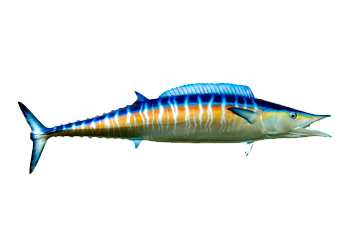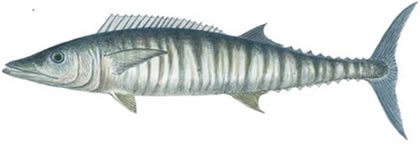

Common names for Wahoo
Ono, kingfish, peto, guarapucu, thazard bâtard
Other languages for Wahoo
- French name: Thazard bâtard
- Italian name: Waho, maccarello striato
- German name: Peto
Introduction to Wahoo
Wahoo is closely related to king mackerel and is a member of the Scombridae family of mackerels and tunas. According to Hawaiian legend, the term wahoo derives from European explorers’ misreading of “Oahu” on early maps, due to the abundance of fish on that island. The alternative name for the fish, ono, is derived from the Hawaiian word no, which means “delicious to eat.” Wahoo are found throughout tropical and subtropical seas of the Atlantic, Pacific, and Indian oceans, although the Caribbean and South Pacific account for the majority of the world crop. The majority of domestic supplies originate in Hawaii. Trollers collect about 50% of Hawaii’s commercial wahoo catch. The remainder of the catch is made with longline gear. Wahoo are frequently caught in Florida as bycatch for tuna and swordfish. While wahoo may reach weights of more than 100 pounds, the average size of fish taken off the coast of Hawaii is between 8 and 30 pounds.
Product profile for Wahoo
Wahoo flesh is lighter in color and contains less red muscular meat than its mackerel siblings. The pale-pink flesh becomes white when cooked. Wahoo has a mild flavor and a firm, lean texture, as well as a big, round flake. The flavor of grilled wahoo has been compared to chicken or veal.
Cooking tips for Wahoo
Although a diverse fish, wahoo benefits from cooking methods designed for low-fat species to prevent the flesh from drying out. It cooks and tastes just like ultra-light tuna. Grilled or broiled, the firm meat is very delicious if marinated prior to tenderize it and accentuate the mild taste.
Nutrition facts for Wahoo
Calories: 167 Fat Calories: 15 Total Fat: 9.4 g Saturated Fat: 2.4 g Cholesterol: 64 mg Sodium: 78 mg Protein: 19.3 g Omega 3: N/A
Primary product forms for Wahoo
Global supply for Wahoo
Australia, Fiji, United States, Iran